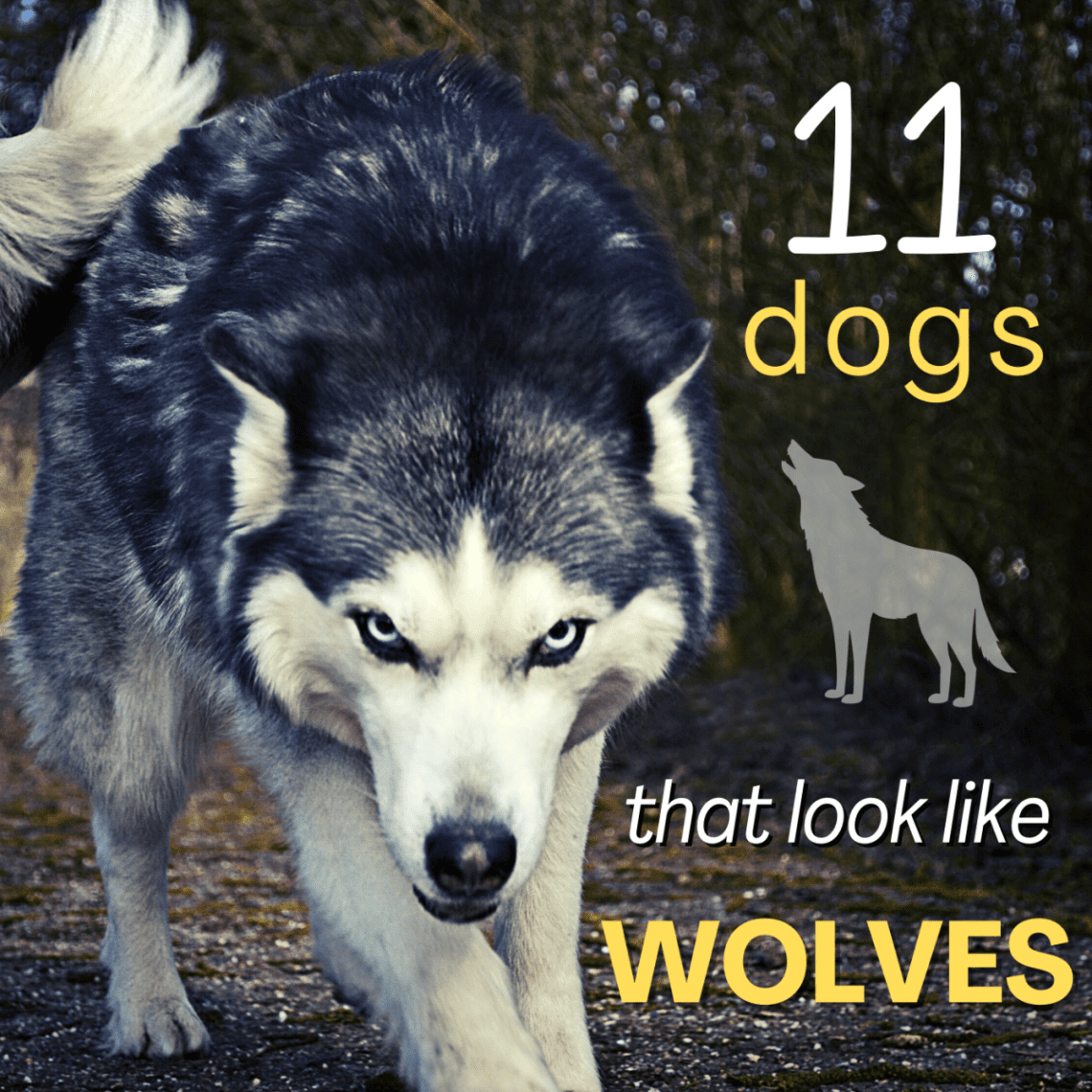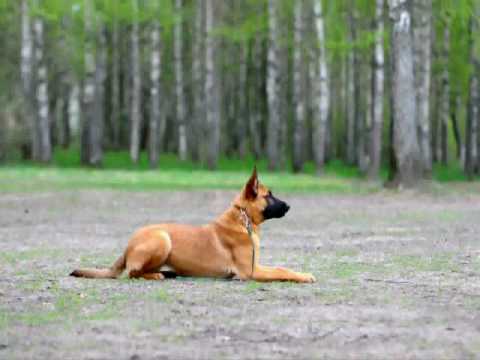
What are the breeds of dogs that look like wolves and their types
Man loves exotic breeds of animals. Crossbreeding a dog and a wolf gives the hope of getting a pet with all the characteristics of a strong wild animal. But experience shows that it is very difficult to make such a crossing, and the offspring may not turn out to be of the quality that was planned.
Contents
Hybrid dog and wolf
In the vastness of our planet, there are few breeds that are officially considered a cross between a dog and a wolf. The difficulty of reproducing and raising such a descendant lies in the fact that only certain types of dogs can participate in the mating process.
A dog breed with wolf admixture can acquire qualities from a domestic pet and a wild animal that do not mix well in one organism and can lead to a deterioration in the characteristics of the dog and the wolf. For example, sled dogs bit by bit cultivated their natural qualities for cargo transportation over a long distance.
The infusion of wolf blood into them, which is unable to drag anything except prey to the nearest shelter, where it can secretly eat it from everyone, will not bring an improvement in qualities and will serve as a rejection of such a hybrid.
Some dog breeders in special kennels believe that a certain level of wolf blood in a wolf dog can serve as relative safety this hybrid for humans. They even withstand the percentage set for themselves, which is determined by genetic research. But scientific dog breeding does not support such a theory.
Many hybrids are very aggressive and unbalanced disposition and unstable psyche in relation even to his master, not to mention the people around him.
The number of hybrids in the world is increasing every year. They can be socialized, tamed, but cannot be made pets. The current opinion that the behavior of wolves and dogs is the same is not correct. Services that capture stray dogs cannot place them in dog shelters and do not have the right to give such breeds for education in families. As a rule, individuals are subject to destruction.
Features of dogs crossed with wolves
A hybrid of a dog and a wolf is less susceptible to genetic diseases transmitted from ancestors. As a result of heterosis, many specimens become healthierthan their parents of different breeds. This happens because in the first generation of hybrids, the genes responsible for the deterioration of vital activity do not show their effect, and high-quality genes are combined in the most beneficial ways.
The main breeds of crossing:
- wolf dog of Saarloos;
- Czech Volchak;
- wolf dog Kunming;
- Italian lupo;
- volamut;
- wolf dogs from the zone in Texas.
There is still controversy regarding the use of the rabies vaccine for crossbreeding individuals. For example, such a drug does not work on wolves, and clear guidelines have not been developed for hybrids. There is an opinion that this provision is common to reduce the content of wolf-dogs in private households.
The average life expectancy of a mixed individual is 12 years, as in dog breeds. In nature, wolves live for about 7–8 years.
A mixture of heterogeneous genes in the body of a wolf-dog leads to the unpredictability of their behavior at different moments in life. Some are quieter than the water, lower than the grass, and even more shy than one of their ancestors, the dog. Many are very curious.
It is impossible to predict how hybrids will behave in a given situation. By observing a single individual for a long time, it is possible to understand its behavior a little, but as for the entire bred breed, such predictions are difficult to make.
- Aggressive behavior. It is wrong to consider the behavior of a hybrid as aggressive towards a person. On the contrary, wolves differ from dogs in their more timid behavior towards people than dogs. Another thing is that a mixture of breeds is characterized by an unbalanced psyche and, at the moment of irritation or discontent, can attack a person.
- Ability to learn. The earlier the puppy is trained, the better the results will be. You can learn to follow simple commands. Of great importance is the amount of wolf blood in the genes of the hybrid. The more such wolf genes, the more cautious the wolf-dog is towards strangers.
- Some hybrids exhibit the traits, instincts and habits of wolves, such as storage arrangements, climbing roofs and fences, and destructive actions inside the house. The influence of wolf habits becomes less noticeable with each subsequent birth of a brood.
Crossing options
In nature, in crossing wolves with dogs, the option prevails when males of wild animals and females of domestic animals mate. In the old days, many Indian tribes tied a female dog in the forest during the mating season to mate with a wolf. Leaving a dog in the forest was like leaving him to certain death. Such males are killed by both wolves and she-wolves.
A she-wolf will not mate with a dog male, because for the right to possess her in the pack there is a war between males, possibly to death. The male dog will not be able to defeat the wolf in strength and will not win the favor of the she-wolf. With a female dog, weakened wolves that have not won a fight or single stray individuals can mate.
In scientific practice, cases of crossing a she-wolf with a dog male are known. Such females are protected and used repeatedly, which sometimes leads to their complete exhaustion. Offspring is obtained complete, viable, each time with a good set of genes.
Crossbreeding dogs and wolves
Wolfdog of Saarloos:
In the thirties of the XX century, the Dutch explorer Saarlos crossed a German shepherd with a wolf of the Canadian forests and brought out a hybrid that was named after him.
All specimens of this breed reach 75 cm at the withers and weigh up to 45 kg. Independent and at the same time devoted dogs unconditionally consider the owner their leader and live by the instincts of the pack. They are able to control their manifestation of aggression, before attacking they are looking for a reason, but there is a quick change in mood.
A very expensive breed was bred for official use. Well developed hunting habits due to instincts. They do not bark, but howl like a wolf.
Czech Volchak:
The breed was bred in the middle of the XNUMXth century by crossing the European Shepherd Dog and the continental wolf. From the wolf she got a beautiful appearance, fearlessness and endurance. A lot of traits got from the dog – devotion, obedience.
Wolf Dog Kunming:
The breed was created in the middle of the XNUMXth century by army specialists in China by crossing a German shepherd dog and local unknown breeds of wolves. Very effective in the search service for the detection of drugs, rescue people, police patrols.
Growth parameters reach at the withers up to 75 cm, weight 42 kg. Females are somewhat smaller in height and weight.
Italian lupo:
The breed was obtained recently, a little over 50 years ago in Italy. The progenitors were the sheepdog and wolves from the islands. Although it is not officially recognized, it is under the auspices of the Italian government, which prohibits unsupervised and uncontrolled breeding.
The animal gets along well with the owner. The individual is adapted to Spartan conditions and a long stay without food. Has a high sense of smell, used to detect drugs and explosives.
Wolamut breed:
A very new breed, bred at the turn of the 20th and XNUMXst centuries from the Malaut breed in Alaska and the Timber Wolf. It was bred for design development. But the appearance of puppies is very variable depending on the litter. Requires a large spacious enclosure and a high fence due to its activity.
Wolf dogs from the zone in Texas:
Barry Hotweed is a leading wolf-dog crossbreeder and has been in the trade for a very long time. He chooses Arctic wolves and already existing hybrids of wolves with dogs of Indian species as the main breeds for work. Very large individuals grow up to 90 cm at the withers and weigh all 50 kg.
The dog breeder begins to accustom puppies to a civilized life from the age of two weeks, when he weaned them from their mother. This socialization should be continued throughout the dog’s life. But still, getting a tender puppy that throws itself on the owner’s neck and licks its nose will not work.
Dog breeds that look like wolves
- Tamaskan breed. Although individuals of this breed outwardly very much resemble a wolf, there are no genes from a forest predator in their blood. For its production in the second half of the XNUMXth century, only dogs were used, and there were up to a dozen breeds participating in the experiment. Scientists have put at the head of the experiments the breeding of a breed similar to a wolf, without using its genes.
- Northern Inuit. To create such a breed, similar to a wolf, but with soft canine character traits, varieties of mestizos of rescue breeds, Alaska Malamutes, German Shepherds were used. The character of the resulting breed is somewhat firm and cannot be used for education by inexperienced dog breeders.
- Utonagan. Offspring from a cross between an Alaskan Malamute, a Siberian Husky and a German Shepherd Dog. Breeding is not yet complete, although the main trends are already visible. An obstacle is the inconstancy of the type of puppies from different litters.
- Finnish spitz. Peat dog breeds were used to breed Spitz. The difference between Spitz is a sharp muzzle, erect sharp ears and a tail wrapped in the form of a ring on the back. Trusting and devoted to the owner, the individual shows excellent watchdog qualities, can be used for bird hunting or for small animals.
- Siberian Husky. Very sociable and non-aggressive breed, often used to breed new breeds. Very picky about the environment. Popular with dog breeders due to its unusual appearance. Greenland is considered the original historical homeland, where the ancestors of the current breed helped a person in hunting for polar bears.
- Alaskan Malamute. The Alaskan Malamute was bred for long-distance sledding. Dogs are active and love long walks. In their free time, they often dig large holes in the ground, which is associated with the instincts of obtaining food from the earth. So their ancestors pulled out small rodents.
- Samoyed dog. This is a type of hunting husky, a very sociable and friendly dog. The tribes of the north have used it for various household tasks for three centuries. Such a breed successfully helped to graze animals, hunt and transport goods in a team.
- Greenland dog. This breed is distinguished by a lively mind, good nature towards people. Very high survivability in cold climates due to thick two-layer fur, a layer of water-repellent down makes her body not subject to freezing. When conveying emotions, he uses a large number of sounds, whines, squeaks, grumbles, barks and howls. He loves to subjugate the surrounding dogs.
- Belgian Shepherd. An energetic and active assistant in looking after herds of animals, they are used for watchmen and guards of houses and buildings. Protective qualities in relation to the owner are expressed very categorically, the dog is always ready for service, quickly understands the assigned tasks.


Watch this video on YouTube
A lot of dog breeds have been bred that contain an admixture of a wolf and just look like them. If you want to have a faithful and always joyful friend, it is better dwell on dog breeds. But the self-confidence of the trainer can allow you to get a more exotic pet, if you have the knowledge and experience to domesticate such an animal.







